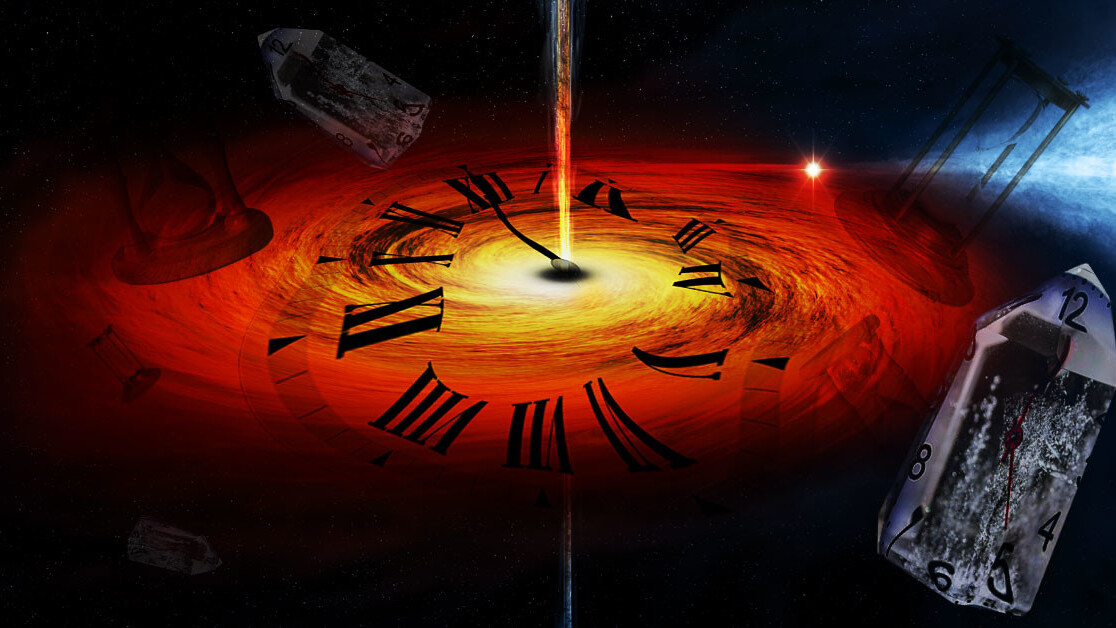
What if I told you all your favorite time-travel films and books were actually created by big tech in order to wrest control of the time-travel industry from the proletariat?
Think about it. Back to the Future, The Terminator, The Time Machine, all of these stories share a central theme where traveling through time is a dangerous proposition that could destroy the very fabric of our reality.
It’s called the butterfly effect. The big idea is that you’d step out of your time travel machine and accidentally step on a bug. Because this bug doesn’t exist… maybe a frog goes hungry and dies. And maybe that frog was supposed to hop on a sabre-tooth tiger’s face at exactly the right moment so the cave person from which our greatest leader will descend can escape death.
But you just had to time travel didn’t you? Now, because that bug is dead, the cave man didn’t live and our planet is a nuclear wasteland when you return to the “present.”
[Read: This quantum physics breakthrough could be the origin story for time travel]
Speaking of nuclear wastelands, a team of scientists from the Los Alamos National Laboratory recently conducted a time travel simulation on IBM’s quantum computer. And what they determined is that all those Hollywood fear mongers are full of it.
Per a press release from the lab, one of the study’s coauthors, theoretical physicist Nikolai Sinitsyn, said:
On a quantum computer, there is no problem simulating opposite-in-time evolution, or simulating running a process backwards into the past. So we can actually see what happens with a complex quantum world if we travel back in time, add small damage, and return. We found that our world survives, which means there’s no butterfly effect in quantum mechanics.
We can’t actually travel back in time, but what we can do is simulate how systems react to perturbances with benefit of hindsight. And the reason we can do this is because quantum computers can travel back in time.
What makes quantum computers so special is that they’re capable of producing all outcomes simultaneously. With a classical computer, for example, we use binary bits to process data by switching resistors on and off. Quantum computers use qubits though. And qubits can be on, off, both, or neither all at the same time. So, if we want to solve a really complex problem we can run it through a quantum computer and get all the answers at once rather than running it through a classical computer multiple times with different parameters to achieve diverse predictions when an outcome is uncertain.
That’s a long-winded way of saying quantum computers can reverse-engineer the past to determine exactly how things in a given system would have unfolded had something else happened.
This doesn’t mean we can finally solve the JFK assassination, that version of the past is a closed system that we currently don’t have access to. But we can create an open system and give the quantum computer access to it via simulation so that it can determine all the different ways things can play out over time.
Quick take: What’s most interesting here is that the simulation itself works as a bit of a quantum mechanics detector.
We know that classical systems suffer from the butterfly effect. Don’t believe me? Go back about 10 code commits and start randomly changing things and then generate new code from the flawed version and see how that works out for your next software build.
Sinitsyn and his coauthor Bin Yan tested their quantum mechanics hypothesis out with help from IBM’s cloud-based Q system. Per the Los Alamos press release:
To test the butterfly effect in quantum systems, Yan and Sinitsyn used theory and simulations with the IBM-Q quantum processor to show how a circuit could evolve a complex system by applying quantum gates, with forwards and backwards cause and effect.
According to the researchers, the butterfly effect doesn’t affect the quantum world so its existence can effectively determine whether a system is classical or quantum in nature.
We can certainly assume that any form of time travel involving human temporal displacement will rely on quantum mechanics — unless of course we turn out to be binary constructs trapped within a simulation ourselves.
And that means, unless we’re in the Matrix, Marty McFly and John Connor were just propaganda meant to scare us regular folk off from using time machines at our leisure. Even Ashton Kutcher lied to us. Butterfly effect schmutterfly effect.
You can read the full study here.
H/t: ScienceAlert
Get the TNW newsletter
Get the most important tech news in your inbox each week.




